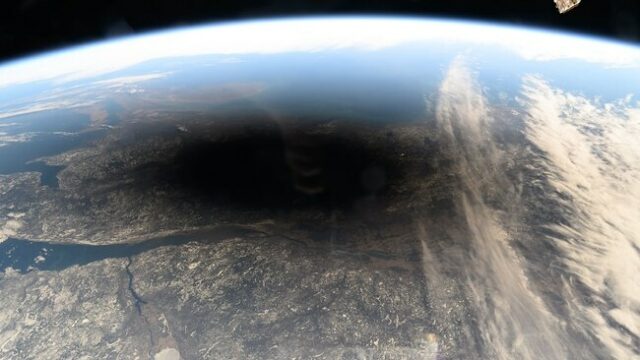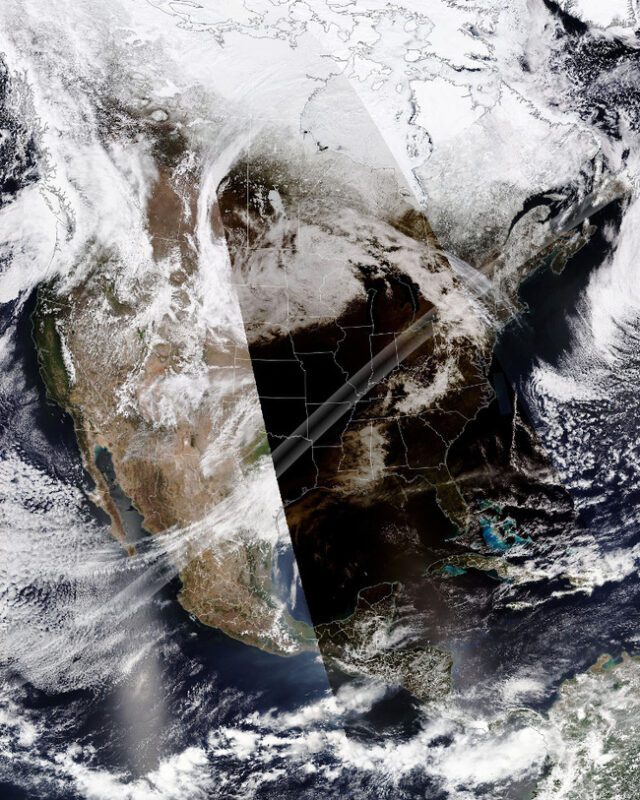
Images of the 2024 total solar eclipse taken from space offer a mesmerizing perspective on this celestial event, revealing the intricate dance between the Sun, Moon, and Earth from above. Captured by satellites like the Geostationary Operational Environmental Satellite (GOES-16) and the Deep Space Climate Observatory (DSCOVR), these images showcase the Moon’s shadow as it traverses across North America, casting a dramatic swath of darkness in its wake. The GOES-16’s advanced baseline imager provides a detailed view of the eclipse’s progression, resembling a striking brown-black mass moving in a precise trajectory. Meanwhile, the DSCOVR satellite’s Earth Polychromatic Imaging Camera (EPIC) captures the eclipse’s entirety, from its inception over the Pacific Ocean to its culmination on the east coast of Canada, enveloping the continent in a surreal shade.

In addition to satellite imagery, firsthand accounts from astronauts aboard the International Space Station and intrepid individuals like NASA astronaut Jessica Meir offer unique perspectives on the eclipse. From 261 miles above the Earth’s surface, astronauts witness the Moon’s shadow as it engulfs portions of North America, while Meir’s airborne chase aboard a T38 jet provides a dynamic experience of racing alongside the eclipse’s path. These diverse viewpoints, both from space and from the skies, serve to deepen our understanding and appreciation of this awe-inspiring celestial phenomenon.















